Is your deworming program working?
By Dr. Grant Crawford
Merck Animal Health maintains the world’s largest database of fecal egg count reduction test (FECRT) results to monitor the field efficacy of dewormers. Today, the database has 14,506 samples from 600 farms. Twenty-three different products have been evaluated.
An FECRT is the standardized diagnostic tool to test manure for the presence of internal parasite eggs. It is important that 20 samples are taken both at treatment and 14 days post-treatment; the database only includes certified FECRTs of this number of samples from single farms. A successful deworming should result in a 90% or greater reduction in parasite eggs in feces.1
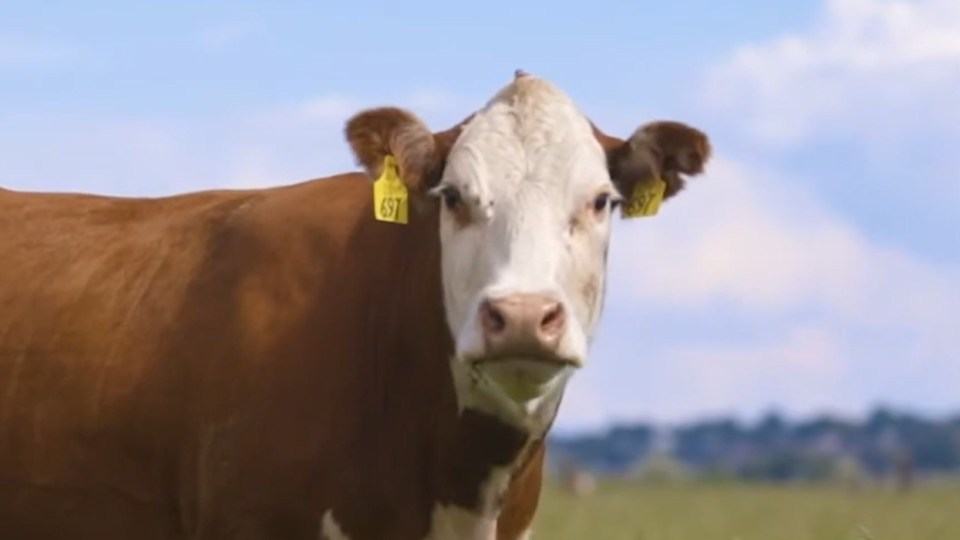
Based on data through 2023, the database demonstrates that pour-on (Graph 1) and injectable (Graph 2) parasite products have fallen below the 90% threshold for successful deworming. The percent of anthelmintic failures — those with less than 90% reduction — was 76.5% for pour-ons and 74.8% for all injectable dewormers (Graph 3).
There are three classes of dewormers approved for use in U.S. cattle: benzimidazoles, endectocides or macrocylic lactones and imidazothiazoles. Certain classes of dewormers are not working as well as they have in the past. However, the SAFE-GUARD (fenbendazole) formulations — all of which are in the benzimidazoles class — provide a median efficacy above 99.7% (Graph 4).
Decreases in efficacy likely are due in part to dewormer resistance, which is the genetic ability of a parasite to survive the effects of a dewormer of which previously were susceptible. Resistance is a global issue and an emerging one for U.S. beef and dairy producers.
There is not always a visual sign of parasitism. Unless FECRT testing is conducted, it is unknown how effective the deworming was or the amount of time before reinfestation occurs after deworming.
Impact of parasitism
Most cattle producers associate internal parasites with a reduction in feed intake. Indeed, the No. 1 effect of internal parasites is a decreased appetite, which means there are fewer nutrients for an animal to absorb. On top of that, internal parasites have a direct effect on nutrition absorption because they cause inflammation in the gut. This reduction in nutrient intake and absorption is detrimental to all cattle but especially highly stressed animals.
Internal parasites affect the nutritional status of the animal in three ways: They decrease feed intake, they decrease nutrient absorption, and they increase nutrient requirements. These effects of internal parasite infections on the animal’s nutritional status are important because they impact and compromise every aspect of biology — including growth, milk production, immune function and reproduction.
Cattle producers put a lot of effort and resources into vaccinating their cattle and offering high-quality feed and mineral programs. These efforts and resources are not fully utilized and can be wasted if cattle are parasitized.
Even a low number of internal parasites can affect cattle health and performance. Cattle with relatively low parasite burdens (324 total slaughter worm counts) have been shown to have depressions in feed intake of up to 3.2%, while cattle with high parasite burdens (11,164 total slaughter worm counts) have been shown to have depressions in feed intake of up to 7.8%.2,3
Younger animals, such as suckling calves, weaned calves, replacement heifers or stocker cattle, are much more susceptible to parasites because of the limited immunity they have built up against them. This will develop as an animal gets older, but cattle are never fully immune to parasites.
Set a deworming strategy
Take these five steps to help maximize cattle performance:
- If using a dewormer that ends in “-ectin,” consider adding another product where the active ingredient is fenbendazole. Not only does a concurrent deworming program most effectively control internal parasites, it also ensures a sustainable deworming program that helps keep resistance to a minimum.
- Treat cattle at turnout but remember, cattle pick up parasites almost immediately after they are on contaminated green grass, and those parasites can start doing damage in a very short time. If cattle are dewormed at turnout and not again until they come off the pasture in the fall, they have several months to pick up gut-damaging worms. Deworming cattle that are on pasture does not require gathering if using feed or mineral formulations and can be highly effective.
- Deworm calves at cowside. When calves start ruminating, they are at a high risk of picking up internal worms. Deworming appropriately from the time of early exposure (from the age of two months) can result in improved weaning weights. For spring-calving herds, it typically is good to deworm calves six to eight weeks after turnout onto pasture. Feed or mineral formulations require relatively little labor.
- Read label directions carefully and give the proper dosing amount. Under-dosing can contribute to reduced efficacy.
- Work with your veterinarian to do FECRT testing annually. It is a simple, reliable method to assess efficacy. It is important that 20 samples are taken both at treatment and 14 days post-treatment. If there is less than a 90% reduction in fecal egg count, a Polymerase Chain Reaction (PCR) test — which is a DNA-based test — should be conducted to determine which parasites remain.
Get a free FECRT kit
Ask your Merck Animal Health representative for a free FECRT kit. Consult your veterinarian for assistance in the diagnosis, treatment and control of parasitism.
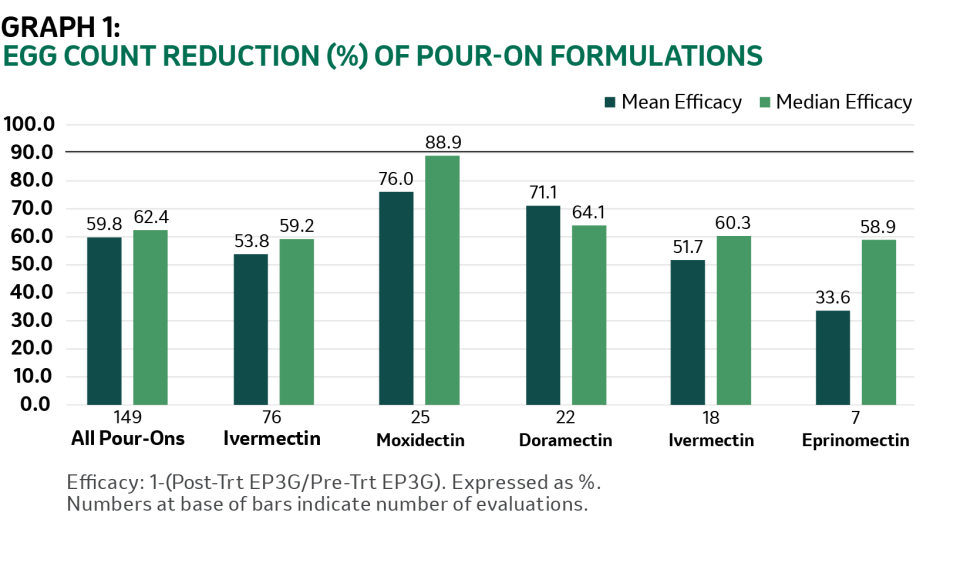
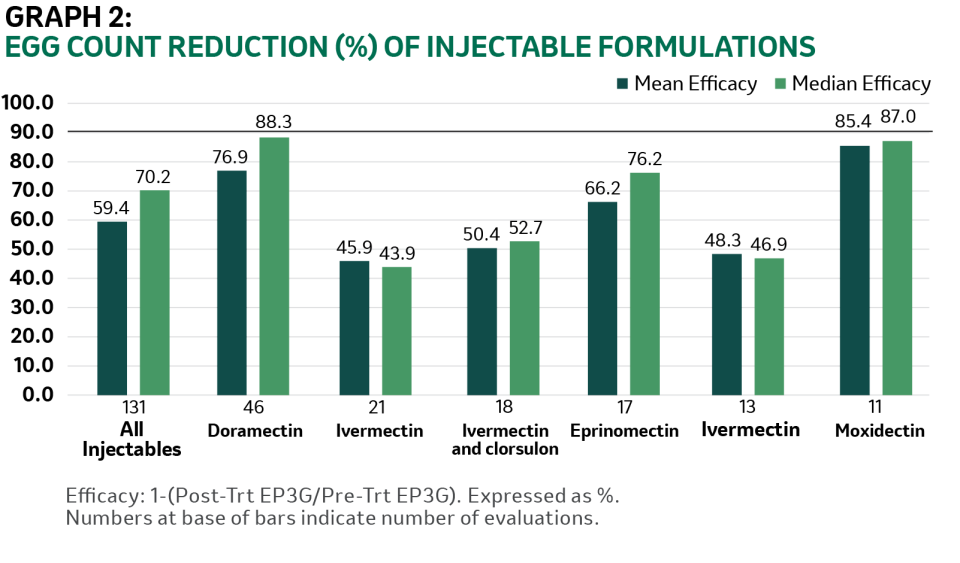
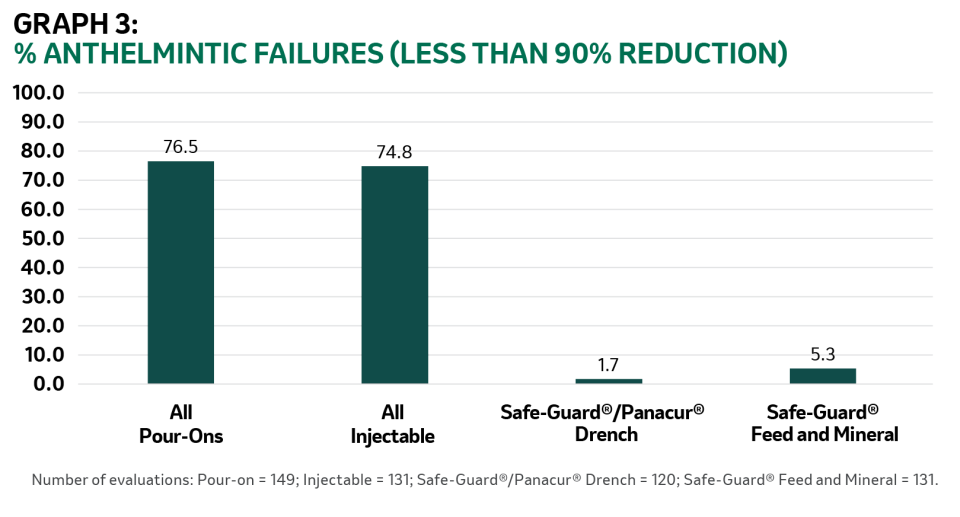
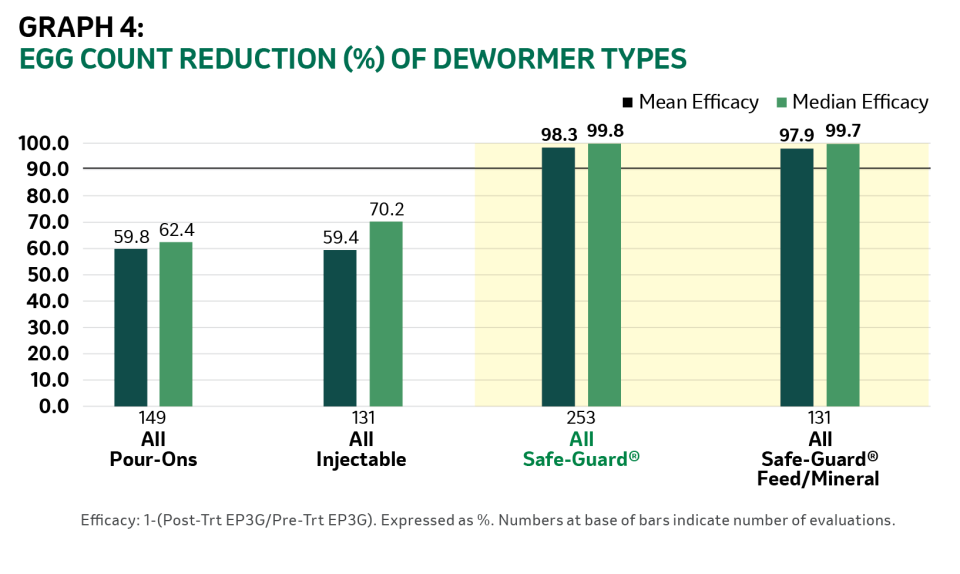
Important Safety Information
Do not use in beef calves less than 2 months old, dairy calves and veal calves. A withdrawal period has not been established for this product in pre-ruminating calves. Additionally, the following meat withdrawal and milk discard times apply:
Safe-Guard Paste: Cattle must not be slaughtered for 8 days. For dairy cattle, the milk discard time is 96 hours.
Safe-Guard Suspension: Cattle must not be slaughtered for 8 days. For dairy cattle, the milk discard time is 48 hours.
Safe-Guard EnProAl Type C Medicated Block: Cattle must not be slaughtered for 11 days. For use in beef cattle only.
Safe-Guard 20% Protein Type C Medicated Block: Cattle must not be slaughtered for 16 days. For use in beef cattle only.
Safe-Guard Type A and other medicated feed products (pellets, cubes, free-choice mineral, or free-choice liquid): Cattle must not be slaughtered for 13 days. For dairy cattle, the milk discard time is 60 hours.
References
- Dobson R., Jackson F., Levecke B., Besier B., et al. Guidelines for fecal egg count reduction tests (FECRT). World Association for the Advancement of Veterinary Parasitology (WAAVP). 2011 Proceedings: 23rd International Conference of the World Association for the Advancement of Veterinary Parasitology.
- Smith, R. A., Rogers, K. C., Huse, S., Wray, M. I., Brandt, R. T., Hutcheson, J. P., Nichols, W. T., Taylor, R. F., Rains, J. R., McCauley, C. T. Pasture deworming and (or) subsequent feedlot deworming with fenbendazole. I. Effects on grazing performance, feedlot performance and carcass traits of yearling steers. Bovine Pract. 2000. 34(2)104-114.
- Taylor, R. F., Bliss, D. H., Brandt, Jr., R. T., Nichols, W. T., Rains, J. R., Hutcheson, J. P. Smith, R. A. Pasture deworming and (or) subsequent feedlot deworming with fenbendazole. II. Effects on abomasal worm counts and abomasal pathology of yearling steers. Bovine Pract. 2000. 34:115-123.
Find more content for your beef operation.
About the author

Grant Crawford, Ph.D.
Associate Director, Cattle Technical Services,
Merck Animal Health
